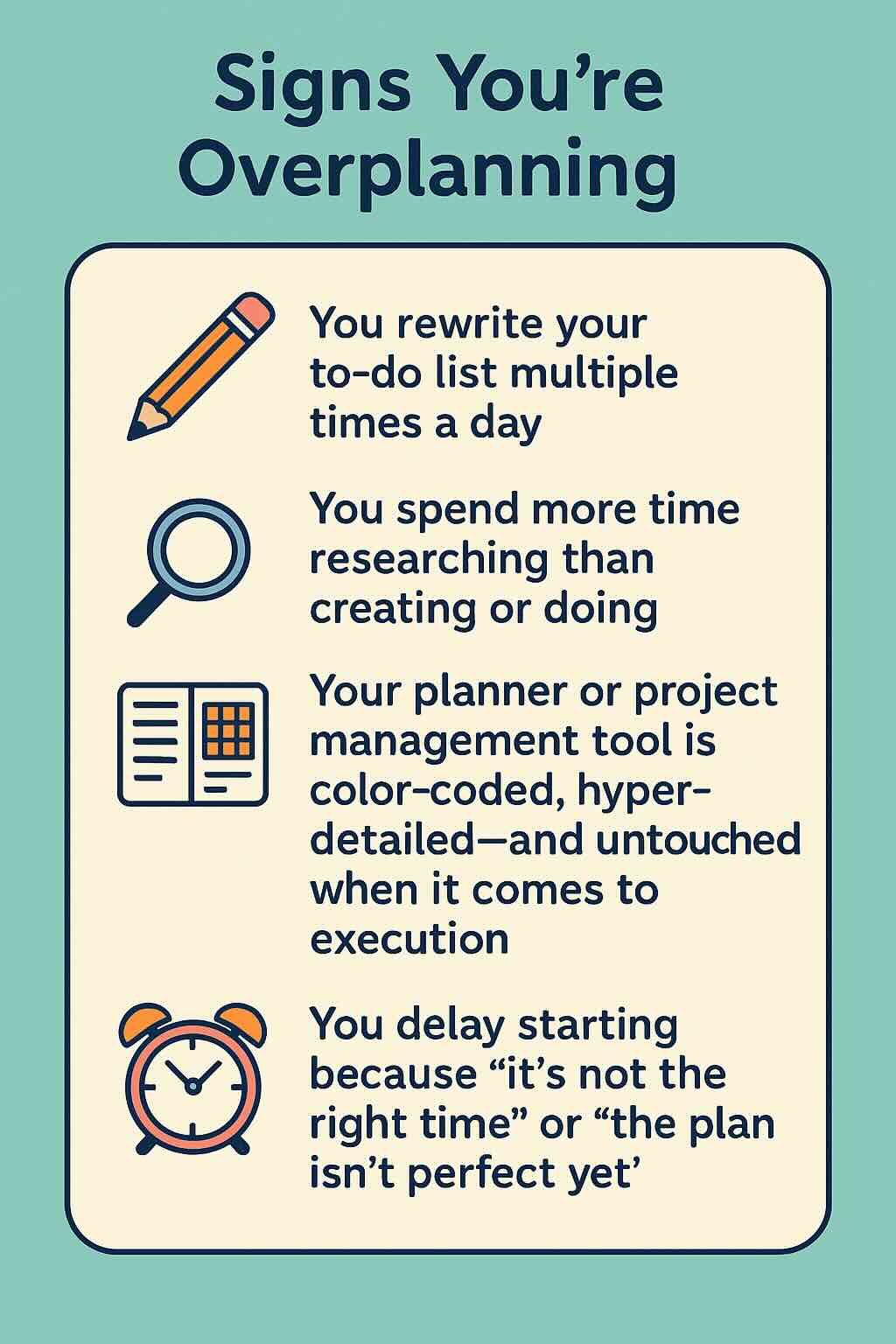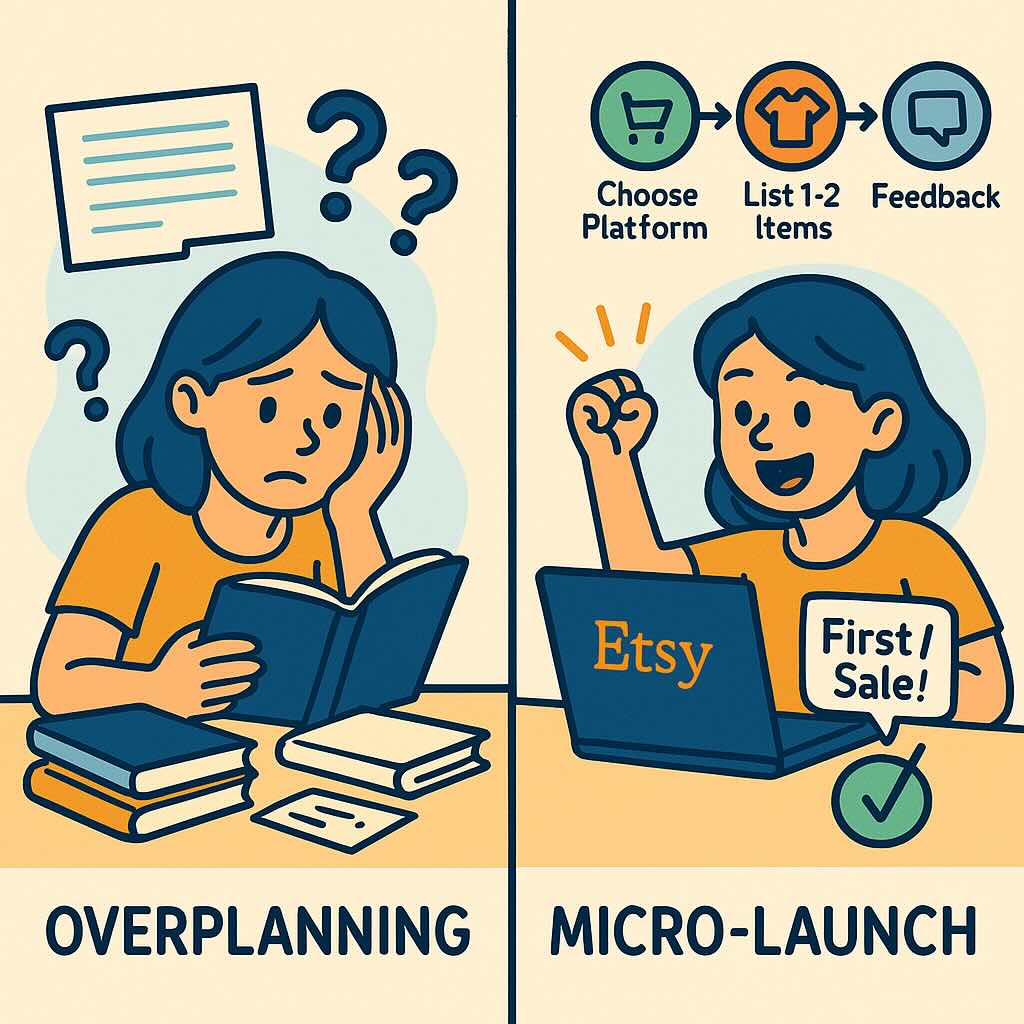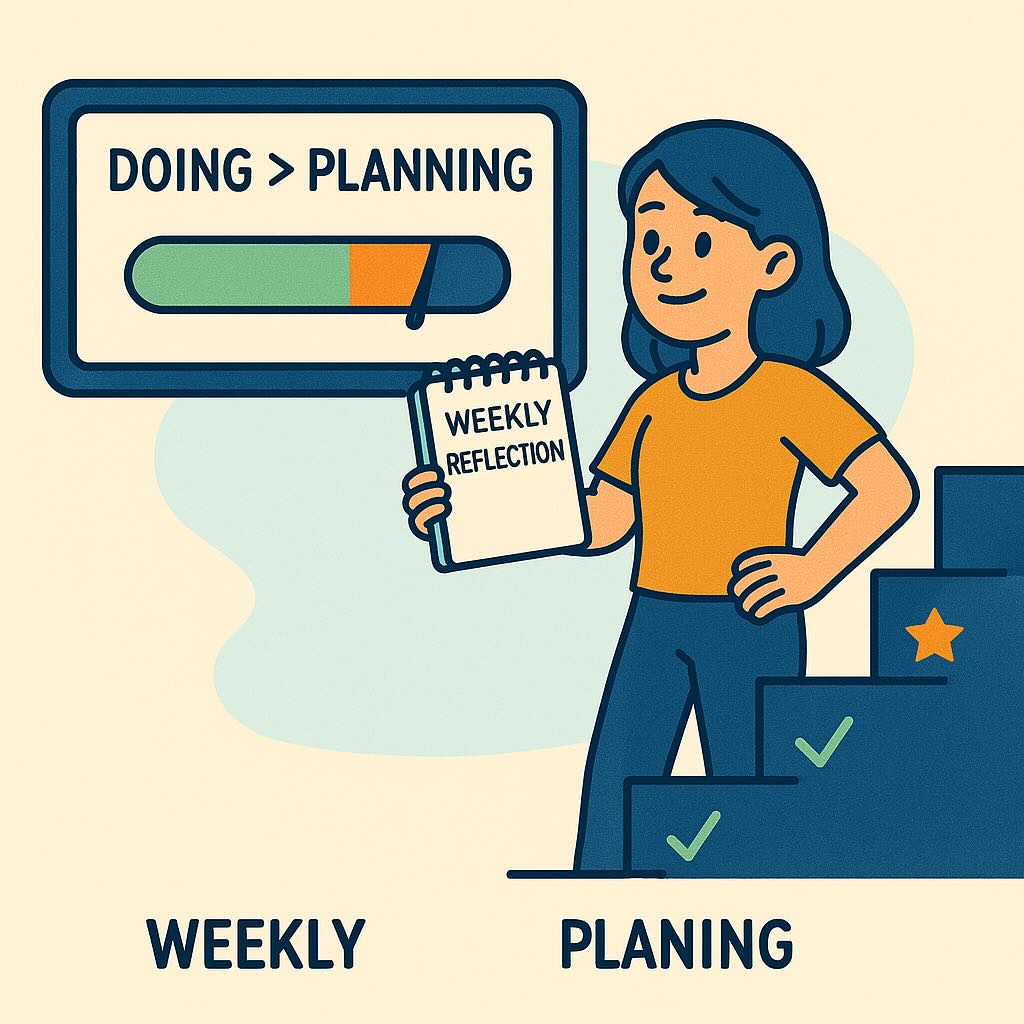How to Stop Overplanning: Achieve More with Less
Estimated Reading Time: ~5 minutes
- Name
- Tison Brokenshire
Updated on

Have you ever spent hours meticulously planning, only to realize you haven’t taken a single real step forward? You’re not alone. Overplanning is surprisingly common—especially for perfectionists or high achievers who want to get everything just right. But constantly refining a plan instead of actually doing the work can lead to stress, missed opportunities, and a whole lot of regret.
In this article, we’ll explore why overplanning happens, how it holds you back, and practical steps you can take to finally break free and start doing instead of just planning.
1. What Is Overplanning?

Overplanning happens when you spend excessive time mapping out every detail of a task or project—far beyond what’s necessary to get started. While having a game plan is good, problems arise when planning becomes a substitute for action. This can stem from:
- Perfectionism: Wanting everything to go flawlessly from day one.
- Fear of Failure: Putting off actual work to avoid the possibility of messing up.
- Information Overload: Getting lost in research and endless “what if” scenarios.
In short, overplanning feels like productivity, but it often stops you from moving the needle.
2. Why We Overplan (and the Cost)

- Avoidance of Anxiety: It’s easier to plan than to face the uncertainty of real action. Ironically, this can increase anxiety in the long run.
- Perfectionism Trap: You believe if you plan more, you’ll avoid mistakes. In reality, mistakes are often the best way to learn.
- Lack of Clarity: When you’re not sure what step matters most, you might get stuck outlining every possible path.
The cost? Missed deadlines, lost momentum, and the frustration of feeling “busy” without genuine progress.
3. Signs You Might Be Overplanning

- You rewrite your to-do list multiple times a day.
- You spend more time researching than creating or doing.
- Your planner or project management tool is color-coded, hyper-detailed—and untouched when it comes to execution.
- You delay starting because “it’s not the right time” or “the plan isn’t perfect yet.”
If any of these ring a bell, you might be in an overplanning cycle.
4. How to Break the Overplanning Cycle

4.1 Set a Planning Time Limit
Give yourself a strict deadline for planning. For instance:
- For small tasks: 10-15 minutes of planning.
- For bigger projects: Maybe one brainstorming session or a half-day at most.
Once the timer is up, commit to starting—no more revisions.
4.2 Embrace the ‘70% Rule’
Many entrepreneurs and productivity experts swear by the idea that if your plan is 70% ready, you should move forward. That remaining 30% is best refined through action and real-world feedback, rather than theoretical planning.
4.3 Focus on Key Milestones (Instead of Every Detail)
Rather than writing a 20-step plan, outline just the big milestones or phases of the project.
- Example: If you’re launching a personal blog, the key milestones might be:
- Choose a blog platform.
- Pick a domain name and theme.
- Write your first three posts.
- Launch and share with friends.
Focus on hitting these milestones, and refine details along the way.
4.4 Use a Simple Task System (3 Tasks a Day)
One strategy is picking 1-3 “must-do” tasks each day. This approach helps you avoid the trap of planning every minute—because you only need to decide which three tasks matter most. Once those are done, consider the day a win.
4.5 Allow Room for Imperfection
This is tough for chronic overplanners, but remind yourself that imperfect action beats no action every time. Mistakes can be corrected as you move forward.
5. Real-Life Example: The Micro-Launch

Picture someone who wants to start an online store. An overplanner might read 10 eCommerce books, compare 15 platforms, and endlessly “tweak” the layout before listing a single product. Instead:
- Pick the simplest platform (e.g., Etsy or Shopify).
- List one or two products right away.
- Gather feedback from early customers to refine your approach.
By launching with minimal planning, you learn faster and start earning or receiving feedback immediately, rather than waiting for the “perfect” moment that never arrives.
6. Maintaining Momentum Over Time

- Regular Review: At the end of each week, do a quick reflection: Did I spend more time planning or doing? Adjust for the following week.
- Set Specific Goals: Instead of “do marketing,” aim for “write and publish one blog post on Tuesday.”
- Celebrate Tiny Wins: Each completed action—no matter how small—is progress.
Conclusion
Overplanning may come from a good place—the desire for excellence—but it can become a barrier to real, tangible results. The key is striking a balance: create a framework to guide you, then take bold steps forward before you have all the answers. By setting clear limits on planning time, focusing on a few crucial tasks, and embracing imperfection, you can turn endless preparation into actual progress.
Take the leap—remember, an imperfect plan put into action beats a perfect plan stuck in your head every time.